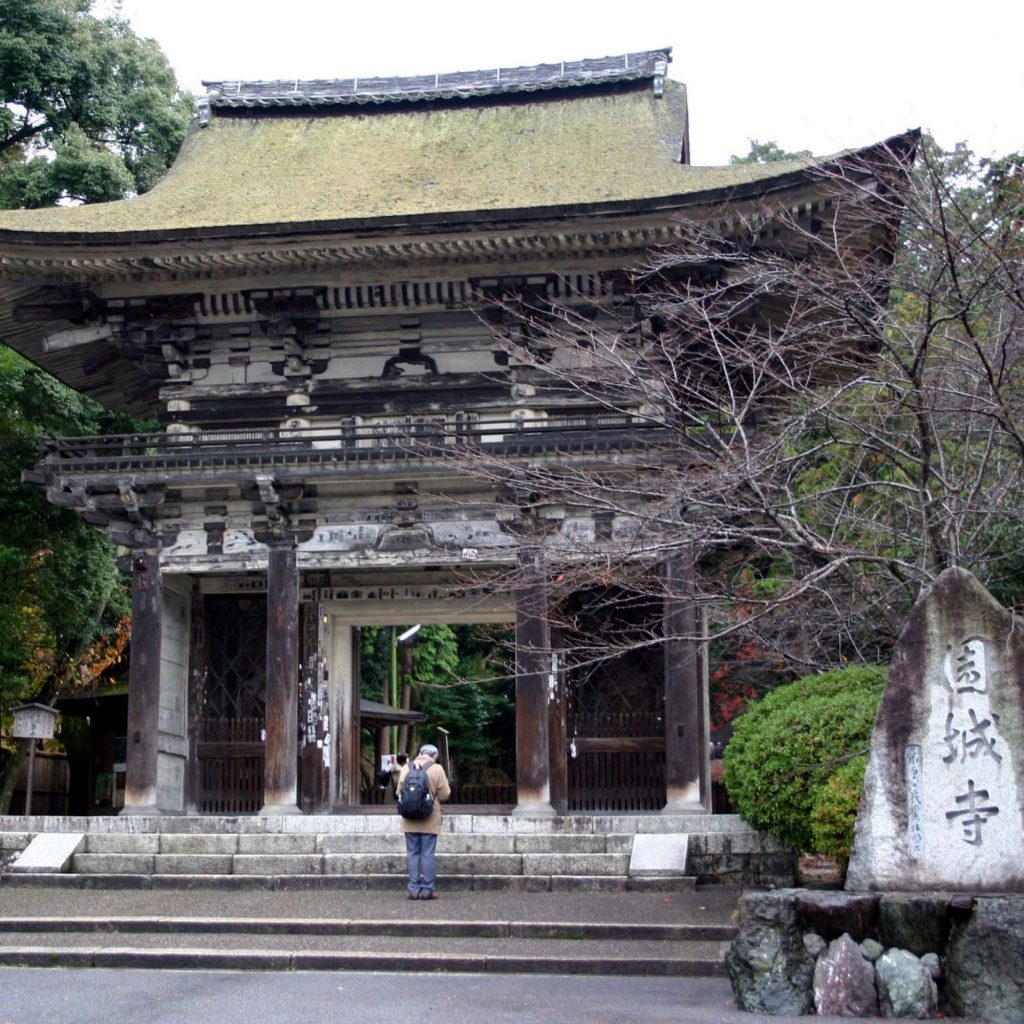
Onjoji Temple is located in the northwestern part of Shiga Prefecture, not far from the center of Otsu City. It has also been known as Mii-dera since ancient times because the well that was used by the three Emperors Tenchi, Tenmu, and Jito for their first baths is within the temple grounds. It is also known for one of the Eight Views of Omi, “Mitsui’s Evening Bell,” and it often appears in New Year’s Eve bells that are broadcast on NHK on New Year’s Eve. The principal image of Buddha is Miroku Bosatsu, and it is famous for its yellow fudo, which is one of the three fudo in Japan. Enryakuji Temple, which is located on Mt. Hiei in the northwest of Onjoji Temple, is the same Tendai sect temple, but they have been on a dog and monkey relationship for more than a thousand years. It is a conflict between the Sanmon sect and the Jimon sect over the position of the Lotus Sutra, the basic sutra of the Tendai sect. Such conflicts are inherent in every religion in the world, such as the conflict between Catholics and Protestants in Christianity, and the conflict between Shia and Sunni in Islam.
園城寺は、滋賀県大津市の中心部からほど近い北西部にあります。天智、天武、持統の三天皇が産湯に使った井戸が寺内にある事から、古くから三井寺としても知られています。また、近江八景の1つである「三井の晩鐘」でも知られ、大晦日にNHKで放映される除夜の鐘にもしばしば登場します。本尊は弥勒菩薩で、日本三不動の一つである黄不動で著名であり、西国三十三ヶ所の第14番札所でもあります。園城寺から更に北西部の比叡山にある延暦寺とは同じ天台宗寺院でありながら犬猿の仲で、千年以上に渡って焼きつ焼かれつの抗争を繰り返してきました。天台宗の基本経本である法華経の位置付けを巡って、山門派と寺門派に別れての争いです。キリスト教のカソリックとプロテスタントの争い、イスラム教のシーア派とスンニ派の争いなど世界のどの宗教にもこうした争いは付きものです。
